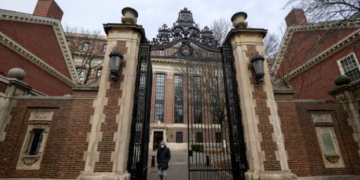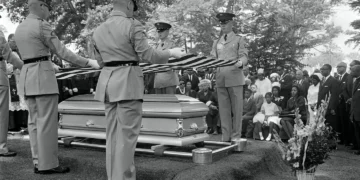Great Oaks Apartments in Lufkin, captured on Jan 24, 2024. Aaliyah Anders, a resident of the complex, tragically lost her life when Lufkin police responded to her 911 call on Dec. 27, 2023. (Photo by Joel Andrews for The Texas Tribune)
Feb 07, 2024 Story by: Editor
LUFKIN — Aaliyah Anders found herself in a nightmare scenario two days after Christmas when her Lufkin apartment complex became a target for a viral TikTok challenge, leading to a series of late-night door-kicking incidents. Seeking aid, Anders called the police, only to tragically lose her life in the encounter.
Officer Lauren Nick, responding to the call, approached Anders’ apartment and rang the doorbell. In a moment of fear and confrontation, Anders, a Black woman, confronted the officer with her own firearm, resulting in fatal shots fired by Nick.
Anders became one of the 1,346 individuals killed by police in the past year, marking the final recorded police shooting fatality in Texas. Despite the alarming numbers, incidents like Anders’ receive little of the attention garnered by high-profile cases such as George Floyd, Breonna Taylor, or Ahmaud Arbery.
Experts point to a variety of factors contributing to this lack of widespread public outcry. University of Houston Assistant Professor Gheni Platenburg highlights the evolving landscape of media coverage, influenced by changes in readership, staffing challenges within news agencies, and the underrepresentation of Black journalists, which often results in overlooked stories impacting communities of color.
Related document from Oxford Bibliographies: The Civil Rights Movement and the Media
Furthermore, local Black leaders in Lufkin chose not to escalate the situation after Anders’ death, citing exceptional transparency from authorities. However, this decision reflects a broader sentiment of resignation and disempowerment within communities of color, where the belief in the effectiveness of protests and advocacy has waned over time.
The decline of local news outlets, particularly in rural areas like Lufkin, exacerbates the issue, disconnecting communities from reliable sources of information and amplifying the challenges of accessing accurate and comprehensive news coverage.
Despite the efforts of civil rights activists and local leaders to address systemic issues and advocate for accountability, the broader narrative surrounding police violence against marginalized communities often fades from public consciousness, overshadowed by news fatigue and a pervasive sense of helplessness.
As Texas continues to grapple with the ongoing crisis of police violence, questions persist about the role of media in shaping public discourse and driving meaningful change in the pursuit of justice and equality. Source: KSAT
















